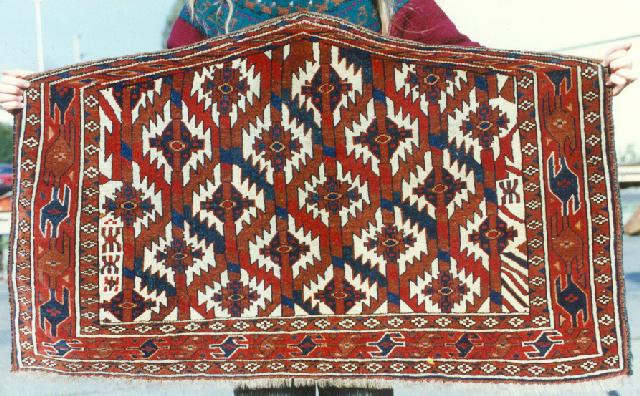| Dear folks -
Steve, doesn't care what an "Ata" is but Marla wants to know.
Well, you have to be careful with Michael Craycraft, because he's not
afraid to "push the envelope" on attribution and when I got his letter
with the asmalyk photo and an Ata label, I wondered what the literature
would say about it.
So I looked it up.
On page 181 of the 1980 edition of his "Comprehensive Guide," Murray
Eiland discusses the major Turkmen tribes and even acknowledges some of
the seeming sub-tribes like Kizil Ayak and Ogourdjali and then provides
the following passage:
"...The situation is more complex, however, since there are still many
descendants of peoples who occupied Turkestan before the Turkomans, and in
many cases these have to a greater or lesser degree become Turkomanized.
There are some small groups of Arab descent, including the Atas, Khojas,
Shikhs, Seids, and Maktums. There are also remnants of various non-Oghuz
Turkic tribes including, Alielis, Nukhurlis, Anaulis, Mekhinlis, and
Murchalis..."
This passage is unchanged in the 2000 edition Eiland has written with
his son.
There are three Ata references in George O'Bannon's recent translation
of and commmentary on Moshkova. (Pages 121, 176 and 177.) Moskova and
company write: "...In the central regions of Transcaspia, weaving was
practiced by the Tekkes and other less numerous tribes...the Atas..." This
passage (p. 177) suggests that these Atas aped the Tekkes in their
weaving. Page 121 places some Atas in the middle Amu Darya. "...Thus the
Turkmen Ata tribe includes the large Nurata subdivision..."
Atas appear to have been Turkmenized Arab groups. There appear to have
been several of them, they wove pile rugs, and they may have taken on the
weaving characteristics of the Turkmen tribe dominant in their particular
area.
Am I the only one in this group who looks up this kind of marginal
thing? 
Regards,
R. John Howe | 







